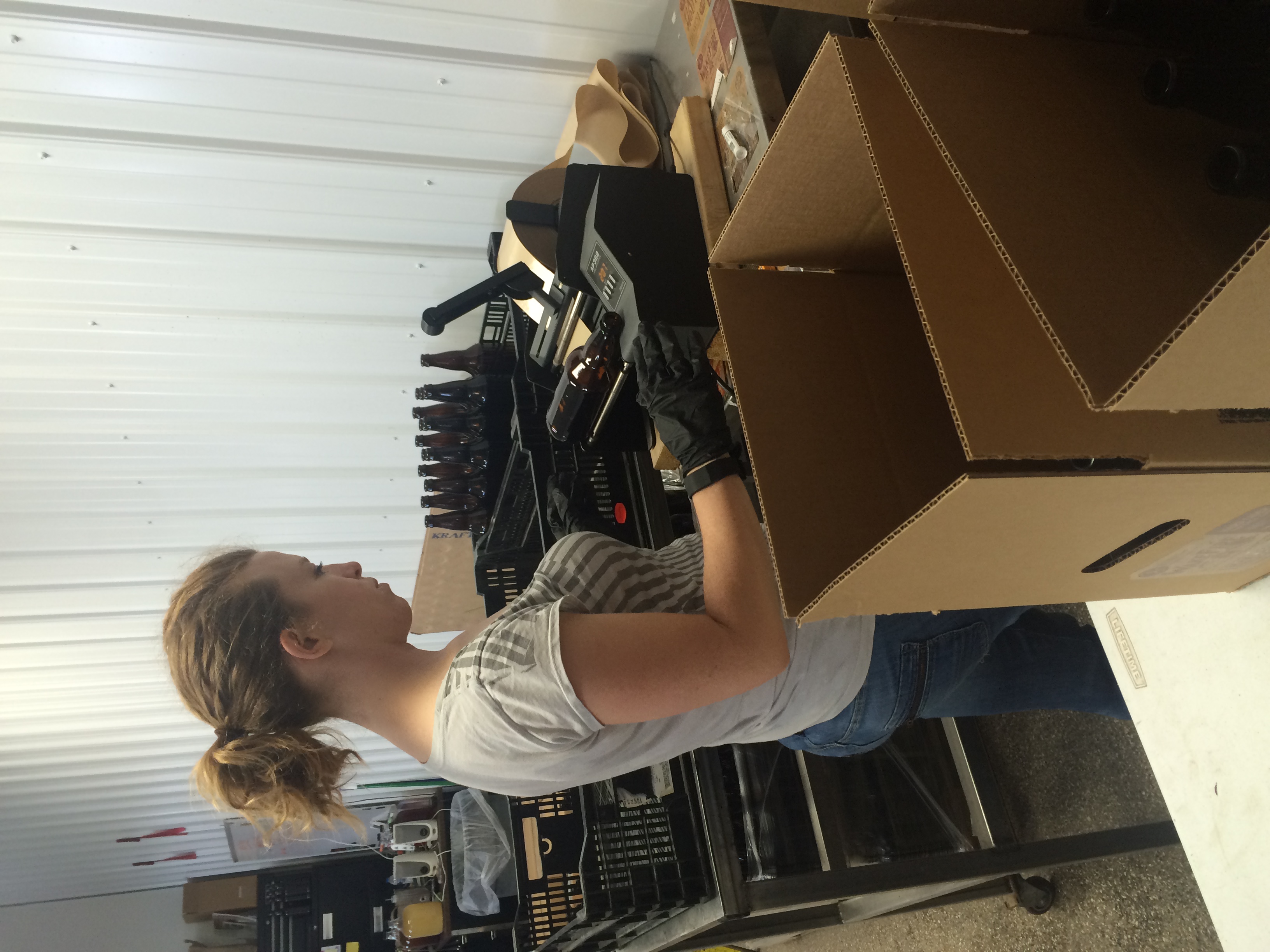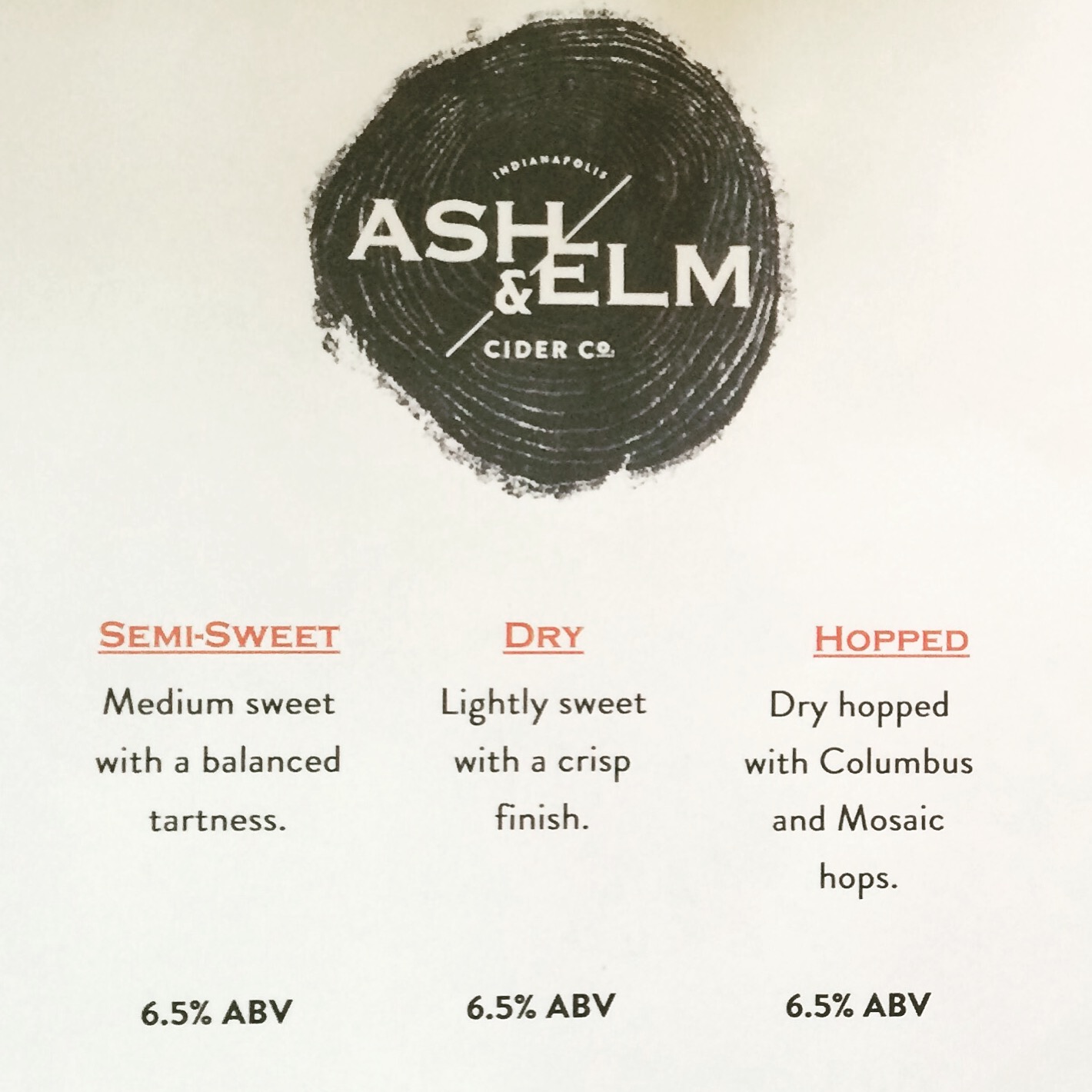We have a guest blogger today - our fantastic Assistant Cidermaker, Joseph Kilbourn. Take it away, Joseph!
As a citizen of our fine modern city and the world, I regularly think about what defines culture. Culture is often a mix of blending current trends with unique ideas. Beyond society at large, a good share of personal culture is explained through stories and myths. I accepted the job of Assistant Cidermaker at Ash & Elm because of how the company has blended both sides of culture within its business plan and its story. It's summed up in the slogan, "Rooted in Tradition, Crafted for Today" and it shows in our first two limited edition releases, the Oaked Imperial Headlong and Del Camino tepache.
Microbrewers Festival lineup.
The Oaked Imperial Headlong debuts during the VIP hour at the 21st Annual Indiana Microbrewers Festival as an homage to the craft beer scene. I would've never pursued cider making without the influence and culture of craft beer -- where you can always try something new, and you can even try your own hand at homebrewing with loads of support from a community of artisans. And now craft cider has a chance to take off in Indy because of road paved by microbrewers. With nods to some of our brewing heros, like the intensely Citra-hopped 3 Floyds Zombie Dust and fond memories of enjoying a Tequila Barrel-Aged Fistful of Hops from Sun King, we oak-aged and tripled the Citra hops in our dry-hopped house cider, Headlong.
To stand up to the quantity of hops and smooth vanilla notes of french oak, we bumped up the ABV by blending it with an Ice Cider made with fresh cider from Tuttle Orchards in Greenfield, IN. The Ice Cider style was invented in Quebec and uses cryoconcentration to remove some of the water from the apple juice before fermentation. After our careful blending, we arrived at a subtle yet powerful ABV of 9.2% for the Oaked Imperial Headlong, which we offer as a sincere 'thank you' to everyone who has created a culture of craft in Indiana.
At the other end of the cultural spectrum, we created Del Camino based on a drink of culture that my wife, Jennifer Delgadillo and I had while traveling in Oaxaca, Mexico last year. Jennifer and I had just visited a traditional family textile business in the smaller village of Teotitlan del Valle where they loom fabrics from scratch on their goat farm. As we traveled back to Santa Lucia Del Camino, we saw a vendor selling a drink from a barrel by the side of the road and pulled over to try some. It was a homemade traditional tepache with pineapple rinds floating in it and bees swarming around it. My wife's cousin who lived there said that you know it's good when the bees want it. The vendor garnished the rim of our cups with a chili powder, salt and lime mixture and skimmed a few bees out for us. While we rode in the back seat of the car, we enjoyed the tangy fermented pineapple tepache. It was bursting with the flavors of piloncillo (Mexican brown sugar with notes of molasses), tamarind (a tart and sweet plant used in many Mexican candies that are coated with chilli powder and salt), and some hints of other spices.
Authentic Mexican tepache from Oaxaca.
Aaron and I recreated this experience as closely as any Hoosier could with a wild-fermented pineapple cider sweetened with piloncillo and Mexican spices. It came out just as tangy and sweet as the original (bees not included) with an ABV of 3.2% that makes it refreshing to drink on a hot summer's day. Ours also comes with the option to garnish it with a dash of adobo/cayenne chili powder, dried tamarind, lime and salt for an extra kick. I can't wait to see how Jennifer thinks Del Camino compares to the tepache we had from the street when it debuts as a refreshing treat for the patrons of the Microbrewers Festival.
Things get a little crazy around here sometimes...
So as Ash and Elm endeavors to become ingrained in the cultural landscape of Indianapolis, we will continue to convert our own cultural experiences into drinkable form so you can taste the ancient, growing, and fresh culture that flows through us.
Stay tuned for information about a special release of both the Del Camino and Oaked Imperial Headlong in our tasting room in the coming weeks.
















